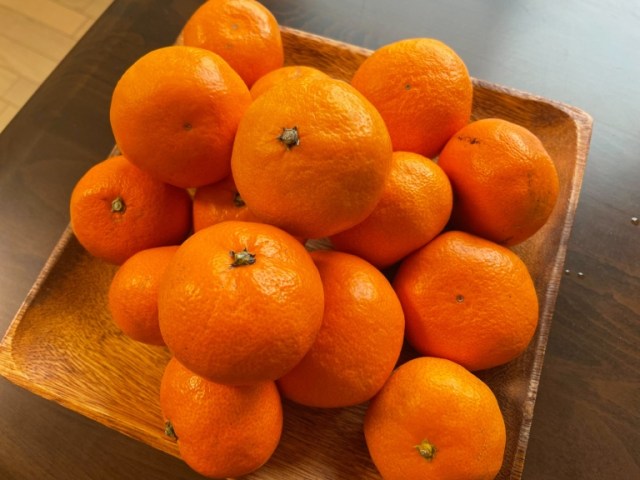
Japanese granny, of course, knew things we didn’t.
Winter is the season for mikan (mandarin oranges) in Japan, so our Japanese-language Yuki Shirai wasn’t at all surprised when she stopped by her grandma’s house and saw she had a bunch of the citrus fruits in her kitchen. What did surprise her, though, was that Granny also had several mikan peels laid out on her porch.
“Aren’t you going to put these in the trash?” Yuki asked, but her grandma had some wisdom to impart: you can use mikan peels for all sorts of things once you’re done eating the fruit! As a matter of fact, dried mikan peel even gets its own special name in Japanese, chimpi, and Yuki made it her mission to try three ways to use it.
First, though, Yuki had to make herself some chimpi. The delicious process involved eating some mikan, putting their skins in a colander in the sunlight, and waiting. Because of the especially cold weather Japan has been having recently, it took two weeks for the peels to thoroughly dry, but she knew they were ready when she gave the colander a gentle shake and heard the skins make a soft rustling noise.
So how can you use dried mikan peels? One option is to use them to clean your kitchen. Just grab a piece in your fingertips and start wiping down your stove, letting the natural cleaning properties of the inner side of the skin clear way grease and oil.
▼ The bottom left corner, where Yuki used the mikan peel, is now grime-free!
To Yuki’s surprise, the peel didn’t crumble or tear as she used it, and even though it didn’t entirely remove the most stubborn spots of grime, it softened it up enough that a second scrub with a cleaning cloth did the job.
Having worked up a thirst cleaning, it was time to test the second use for Yuki’s mikan peels by making some chimpicha, or chimpi tea.
For this, you’ll need one and half dried mikan peels. Start by putting them in food processor (or you could grind them by hand). Pour the powder into a teacup, add hot water, and you’re all set!
Technically, chimpicha isn’t tea, because it doesn’t use tea leaves. It is, however, a delicious and relaxing drink, and one that’s supposedly good for you too, since mikan peel is said to help fortify the body against chills and aid in digestion. The only possible negative Yuki could find is that some people might find the unique bitter notes in the taste of mikan peel to be a little unpleasant, in which case she recommends stirring in a bit of honey to balance the flavor profile out with a little sweetness.
Now thoroughly relaxed, Yuki was ready to hit the sack, but following Japanese customs, she needed to hop in the bath before she hopped into bed. This brings us to the third use for mikan peels she tried, the chimpiyu, or chimpi bath.
All you need for this is dried peels (Yuki used two mikan’s worth) and a laundry net, or some other sort of mesh pouch. Put the peels in the pouch, the pouch into your bathtub of hot water, and you’re done.
Yuki had been looking forward to a luxuriously citrus-scented bath, but unfortunately it didn’t smell all that different from a bathtub without any mikan peels in it. Considering how fantastically fragrant her cup of chimpicha had been, she wondered if maybe she should have used a bigger quantity of peels for her bath. Still, mikan peels contain limone, an essential oil component, that’s supposed to be beautify the skin, so she was still getting benefits from the special bath, even if her nose wasn’t aware of the difference.
Peak mikan season is going to last a few more weeks in Japan, and the large variety of mandarins grown in the country mean you can usually find at least one type no matter when you go to the supermarket, so Yuki can now look forward to putting her peels to use all year long.
Reference: Kurashi no Market
Photos © SoraNews24
● Want to hear about SoraNews24’s latest articles as soon as they’re published? Follow us on Facebook and Twitter!
[ Read in Japanese ]

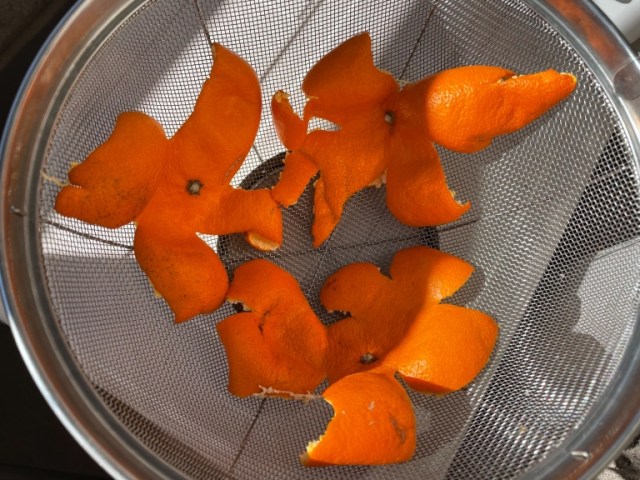
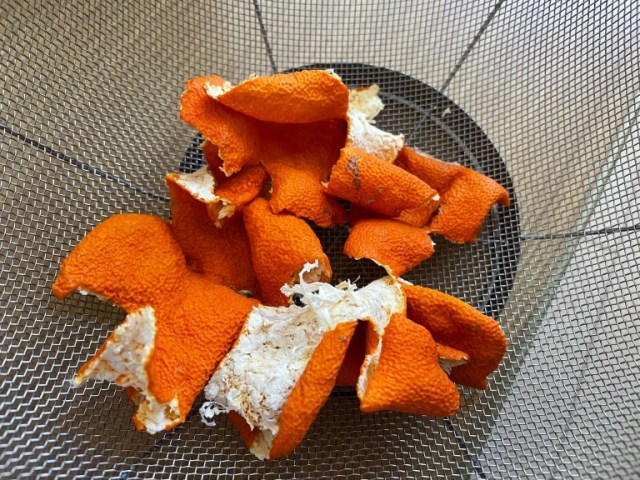
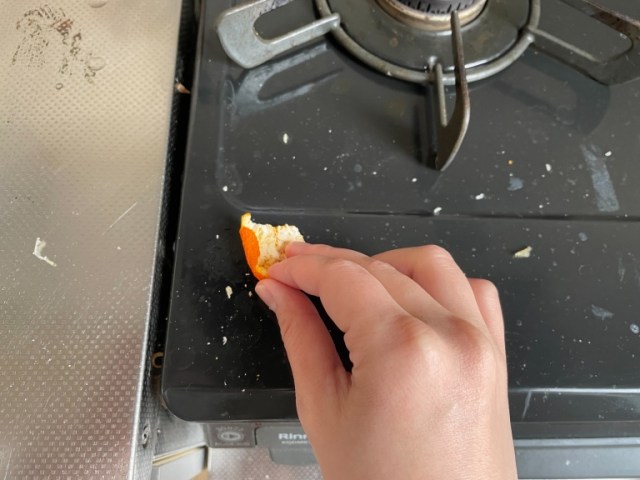

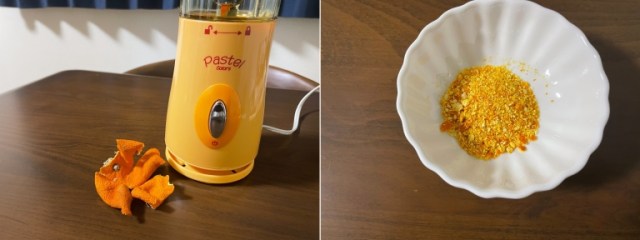
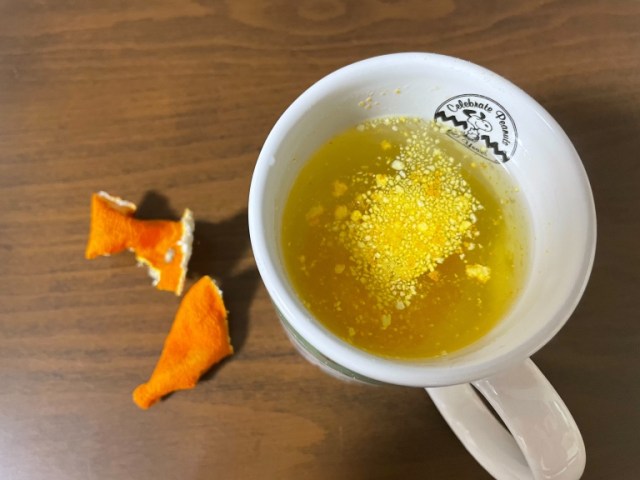
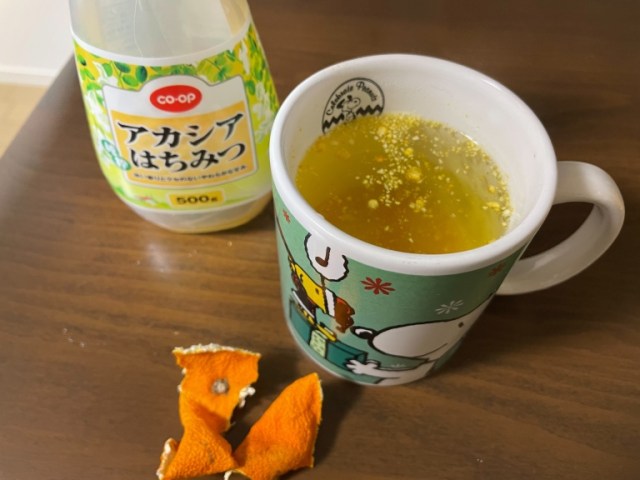
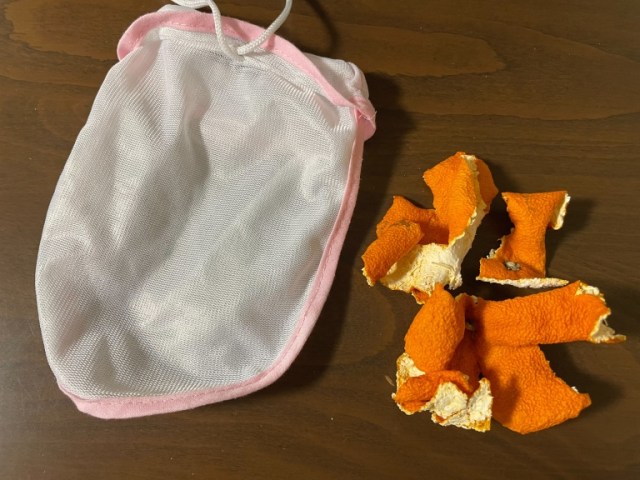
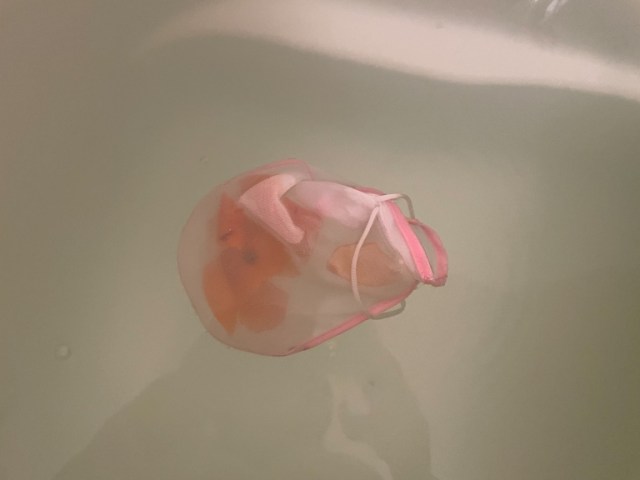
 The cool way to peel a mandarin, according to a Japanese grandma
The cool way to peel a mandarin, according to a Japanese grandma Capybaras celebrate winter in luxurious mikan bath【Photos】
Capybaras celebrate winter in luxurious mikan bath【Photos】 Shogun sweets? Trees said to be planted by first Tokugawa shogun still bear fruit used for sweets
Shogun sweets? Trees said to be planted by first Tokugawa shogun still bear fruit used for sweets Next time you eat an orange, why not make it into an orange caterpillar first?
Next time you eat an orange, why not make it into an orange caterpillar first? Japan’s gorilla poo oranges are now in season, and being given away for free!
Japan’s gorilla poo oranges are now in season, and being given away for free! Seaside scenery, history, and so many desserts on Yokohama’s Akai Kutsu【Japan Loop Buses】
Seaside scenery, history, and so many desserts on Yokohama’s Akai Kutsu【Japan Loop Buses】 Foreigner’s request for help in Tokyo makes us sad for the state of society
Foreigner’s request for help in Tokyo makes us sad for the state of society Red light district sushi restaurant in Tokyo shows us just how wrong we were about it
Red light district sushi restaurant in Tokyo shows us just how wrong we were about it Japanese city loses residents’ personal data, which was on paper being transported on a windy day
Japanese city loses residents’ personal data, which was on paper being transported on a windy day Harajuku Station’s beautiful old wooden building is set to return, with a new complex around it
Harajuku Station’s beautiful old wooden building is set to return, with a new complex around it Starbucks Japan adds a Motto Frappuccino to the menu for a limited time
Starbucks Japan adds a Motto Frappuccino to the menu for a limited time Japan’s new wearable air conditioner belt is here just in time for the Tokyo heat wave
Japan’s new wearable air conditioner belt is here just in time for the Tokyo heat wave Akihabara pop-up shop sells goods made by Japanese prison inmates
Akihabara pop-up shop sells goods made by Japanese prison inmates Japan’s massive matcha parfait weighs 6 kilos, contains hidden surprises for anyone who eats it
Japan’s massive matcha parfait weighs 6 kilos, contains hidden surprises for anyone who eats it North Japan prefecture creates guide to help new foreign workers understand local language quirks
North Japan prefecture creates guide to help new foreign workers understand local language quirks McDonald’s new Happy Meals offer up cute and practical Sanrio lifestyle goods
McDonald’s new Happy Meals offer up cute and practical Sanrio lifestyle goods Japanese ramen restaurants under pressure from new yen banknotes
Japanese ramen restaurants under pressure from new yen banknotes French Fries Bread in Tokyo’s Shibuya becomes a hit on social media
French Fries Bread in Tokyo’s Shibuya becomes a hit on social media Studio Ghibli releases new action figures featuring Nausicaä of the Valley of the Wind characters
Studio Ghibli releases new action figures featuring Nausicaä of the Valley of the Wind characters New private rooms on Tokaido Shinkansen change the way we travel from Tokyo to Kyoto
New private rooms on Tokaido Shinkansen change the way we travel from Tokyo to Kyoto Tokyo Tsukiji fish market site to be redeveloped with 50,000-seat stadium, hotel, shopping center
Tokyo Tsukiji fish market site to be redeveloped with 50,000-seat stadium, hotel, shopping center All-you-can-drink Starbucks and amazing views part of Tokyo’s new 170 meter-high sky lounge
All-you-can-drink Starbucks and amazing views part of Tokyo’s new 170 meter-high sky lounge Beautiful Ghibli sealing wax kits let you create accessories and elegant letter decorations【Pics】
Beautiful Ghibli sealing wax kits let you create accessories and elegant letter decorations【Pics】 Studio Ghibli releases Kiki’s Delivery Service chocolate cake pouches in Japan
Studio Ghibli releases Kiki’s Delivery Service chocolate cake pouches in Japan New definition of “Japanese whiskey” goes into effect to prevent fakes from fooling overseas buyers
New definition of “Japanese whiskey” goes into effect to prevent fakes from fooling overseas buyers Our Japanese reporter visits Costco in the U.S., finds super American and very Japanese things
Our Japanese reporter visits Costco in the U.S., finds super American and very Japanese things Studio Ghibli unveils Mother’s Day gift set that captures the love in My Neighbour Totoro
Studio Ghibli unveils Mother’s Day gift set that captures the love in My Neighbour Totoro More foreign tourists than ever before in history visited Japan last month
More foreign tourists than ever before in history visited Japan last month New Pokémon cakes let you eat your way through Pikachu and all the Eevee evolutions
New Pokémon cakes let you eat your way through Pikachu and all the Eevee evolutions Sales of Japan’s most convenient train ticket/shopping payment cards suspended indefinitely
Sales of Japan’s most convenient train ticket/shopping payment cards suspended indefinitely Sold-out Studio Ghibli desktop humidifiers are back so Totoro can help you through the dry season
Sold-out Studio Ghibli desktop humidifiers are back so Totoro can help you through the dry season Japanese government to make first change to romanization spelling rules since the 1950s
Japanese government to make first change to romanization spelling rules since the 1950s Ghibli founders Toshio Suzuki and Hayao Miyazaki contribute to Japanese whisky Totoro label design
Ghibli founders Toshio Suzuki and Hayao Miyazaki contribute to Japanese whisky Totoro label design Doraemon found buried at sea as scene from 1993 anime becomes real life【Photos】
Doraemon found buried at sea as scene from 1993 anime becomes real life【Photos】 Tokyo’s most famous Starbucks is closed
Tokyo’s most famous Starbucks is closed One Piece characters’ nationalities revealed, but fans have mixed opinions
One Piece characters’ nationalities revealed, but fans have mixed opinions We asked a Uniqlo employee what four things we should buy and their suggestions didn’t disappoint
We asked a Uniqlo employee what four things we should buy and their suggestions didn’t disappoint Princesses, fruits, and blacksmiths: Study reveals the 30 most unusual family names in Japan
Princesses, fruits, and blacksmiths: Study reveals the 30 most unusual family names in Japan New sushi types: chocolate citrus yellowtail and cheddar cheese tempura. Crazy, or crazy good?
New sushi types: chocolate citrus yellowtail and cheddar cheese tempura. Crazy, or crazy good? Mikan Gohan: Japanese soul food or…Japanese myth?
Mikan Gohan: Japanese soul food or…Japanese myth? Japan’s big eats just got even bigger at this little-known cafe
Japan’s big eats just got even bigger at this little-known cafe Hamster chills out in mandarin orange skin, looks adorable 【Video】
Hamster chills out in mandarin orange skin, looks adorable 【Video】 A whole bunch of capybara videos to help ease your presidential election stress【Videos】
A whole bunch of capybara videos to help ease your presidential election stress【Videos】 Love Live! character with controversial skirt to continue as orange spokesperson, petitioner says
Love Live! character with controversial skirt to continue as orange spokesperson, petitioner says Cat kotatsu let your feline friends relax through winter the Japanese way【Photos】
Cat kotatsu let your feline friends relax through winter the Japanese way【Photos】 10 slightly strange Christmas trees from Japan
10 slightly strange Christmas trees from Japan Easy peasy lemon squeezy: Our writer attempts to make salted lemon
Easy peasy lemon squeezy: Our writer attempts to make salted lemon Mikan flavored potato chips sound gross, but may actually be genius marketing
Mikan flavored potato chips sound gross, but may actually be genius marketing Drinkable Hi-Chew coming to a Japanese convenience store near you!
Drinkable Hi-Chew coming to a Japanese convenience store near you! Is Japan overworking its teachers? One exhausted educator says, “YES!”
Is Japan overworking its teachers? One exhausted educator says, “YES!” Elderly Wakayama woman arrested for hacking her local supermarket’s self-checkout
Elderly Wakayama woman arrested for hacking her local supermarket’s self-checkout Turning a crazy cheap country Japanese house into a home — Step 9: Chestnuts【SoraHouse】
Turning a crazy cheap country Japanese house into a home — Step 9: Chestnuts【SoraHouse】 Fukuoka senior arrested for stealing a single grape, denies charges
Fukuoka senior arrested for stealing a single grape, denies charges We get our hands on a coveted Yodobashi lucky bag, this time the beauty and health gadget box
We get our hands on a coveted Yodobashi lucky bag, this time the beauty and health gadget box
Leave a Reply